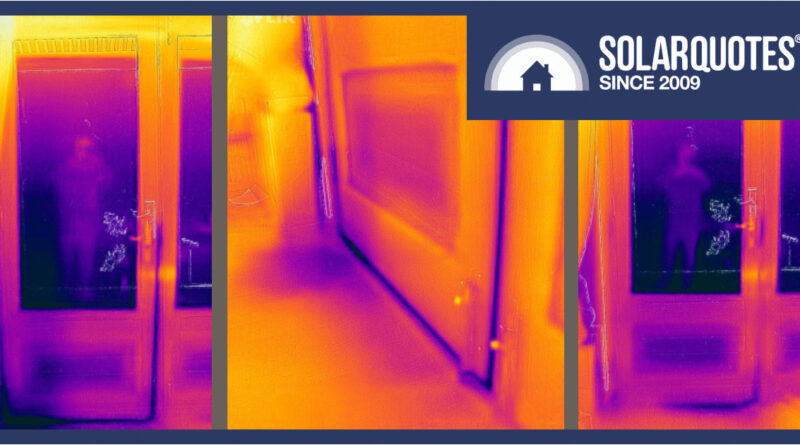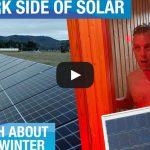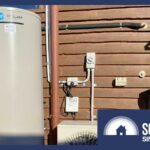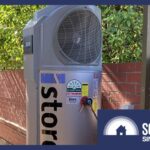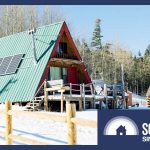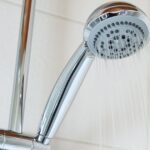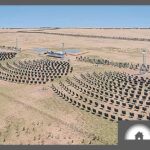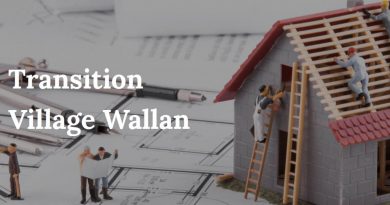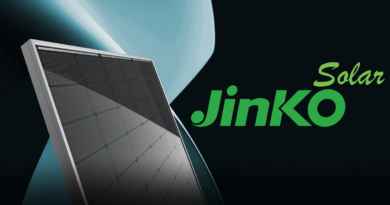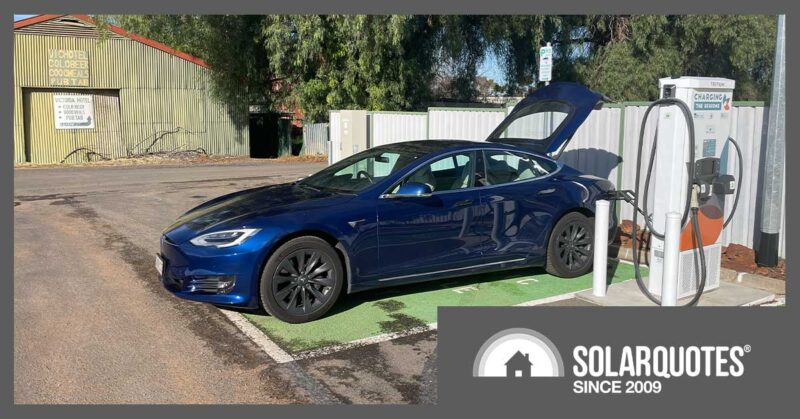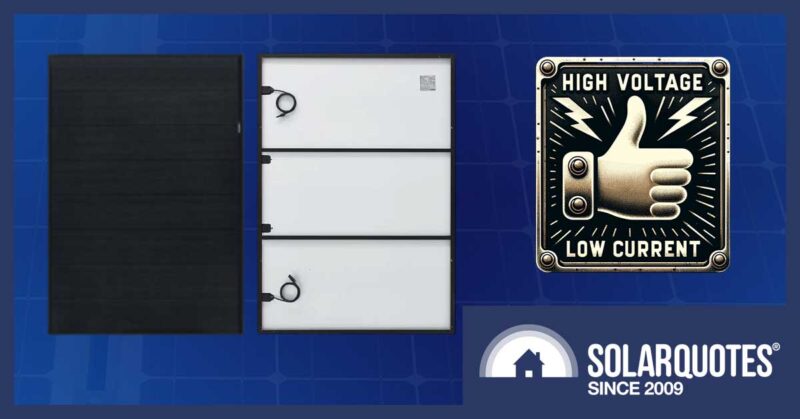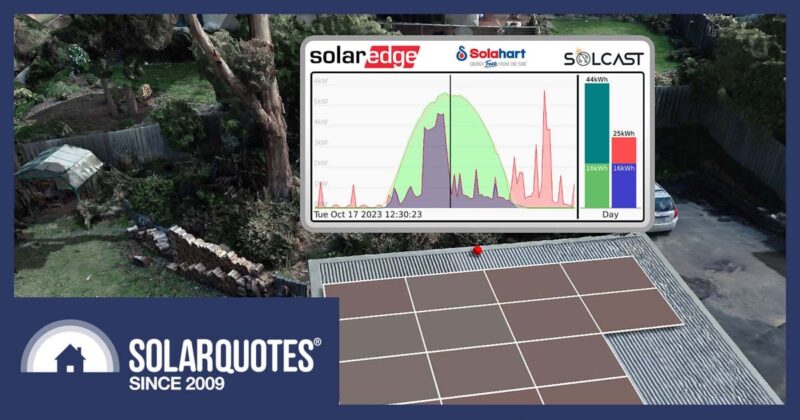Damn It’s Cold: Inferior Housing Leaves Australians Freezing
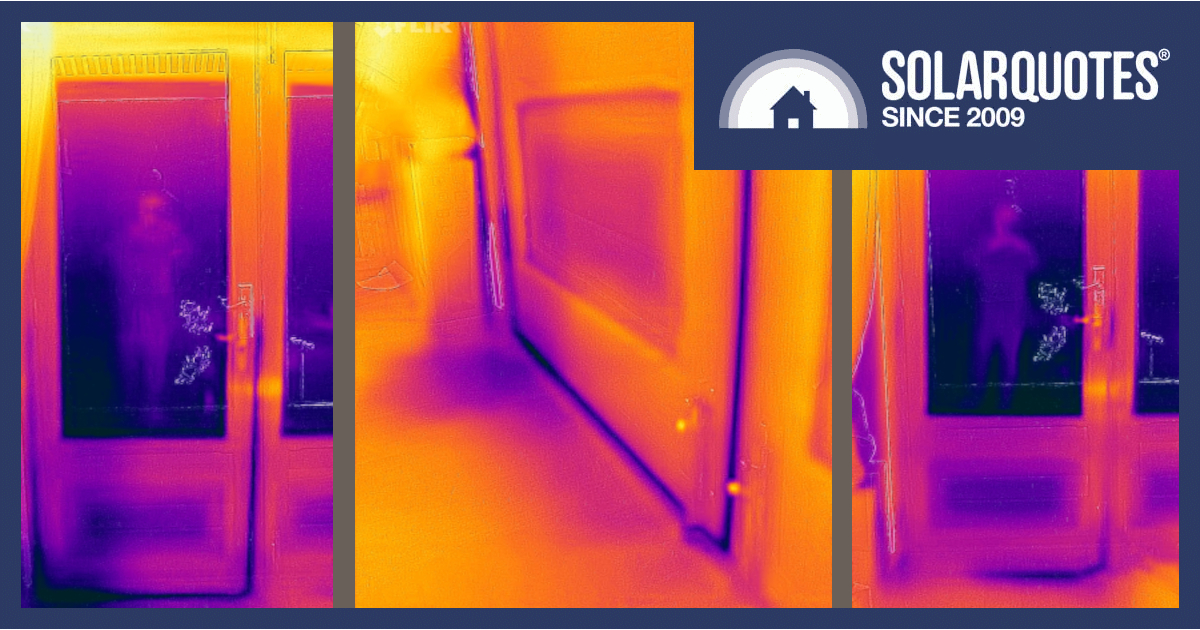
They might look nice, but French doors are a leaky liability. Draft-proofing has been a winner for me (note the lack of a dark blue line around the doorframe in the right-hand ‘after’ pic).
The winter solstice is upon us, bringing dismal weather to Adelaide and much of Australia. And in other shocking news, water is wet.
Equally distressing is the impending wave of power price rises on the horizon, and since economic vandals decided to sell all our gas for next to nothing, heating is expensive. Even if you already have a solar panel system helping to power your heating, a poorly insulated home is still a money pit.
But how are average Aussies holding up? And what can you do to make things a little cosier without pouring more money into heating? Let’s take a snapshot of Australia in these chilly winter months.
Australians Build Rubbish Houses
There I said it, come at me building industry. I’ve been taking notes from my favourite social threads recently, and I’ll paraphrase a few discussions from some energy-efficiency enthusiasts. Some are even what you might call ‘professionally frugal’.
The frigid winter has set in – the reverse cycle split air conditioners are working at full tilt and the heat pump hot water service is humming away too.
Outside, it’s 3.7ºC, feeling more like a biting 2.3ºC – a reality that the air conditioners are battling. I estimate they’re managing an average Coefficient of Performance (COP) of 2.5 under these conditions, meaning we’re pushing approximately 25kW of heat into the building right now.
It was cold throughout the day and our 26.6kW solar panels produced a modest 37kWh, with consumption so far at 47kWh. I anticipate another half hour of heating tonight and a challenging morning as the air conditioners are likely to freeze up.
The takeaway? Winters in Victoria can be brutal. How is everyone else managing?
That was a report from Karl Jensen, an avid electrification evangelist and inimitable solar industry figure who thinks iStore heat pump hot water services are the best thing ever. You’ll get full disclosure that he wholesales them, but only after he’s delivered a rapid-fire breakdown of cost and efficiency that would even convince Oscar the Grouch to install one (and happily take a hot bath).
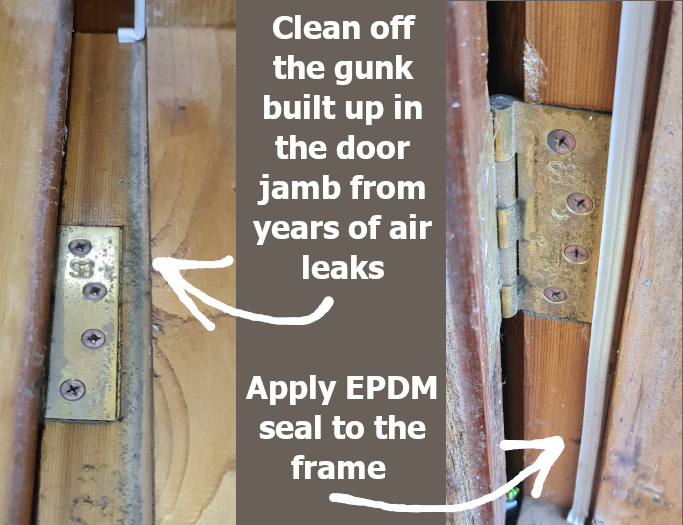
DIY insulation tip: start with the basics. Draft-proofing doors and windows prevents energy leaking (or, in my case, pouring) from your house.
How’s Everyone Holding Up?
I’ve changed the names to protect the guilty, but people are somewhere between nervous and resigned. Or both. Overall, there’s a tone of acceptance that I find sadly lacking in the sensational media.
Mark Thomson
Wearing a beanie, long johns, woollen undershirt, 2 to 3 layers of clothing, drinking a hot coffee. 11watt light globe on. Warm as toast with minimal consumption.
You/we, aren’t going to buy our way out of climate change.Jim Simpson
Mark Thomson Don’t assume that us skinny folk with our heaters on aren’t also padded up like the Michelin man! I couldn’t afford to run a heater enough to not be layered up when it’s cold.Chris Omealy
Freezing. With no underfloor insulation and our ceiling in need of a refit.Coral Mallard
Yes the consumption gave me a fright! I can’t look at the monitoring app anymore.Robin Millar
Coral Mallard oh god I just looked! … when good monitoring goes bad!Rohan McGlew
Too scared to look.Adan Worthley
Not much you can do to buck the weather.Guy Dua
Minus 6 in Canberra tonight, my RCAC outdoor unit will be a massive ice cube.
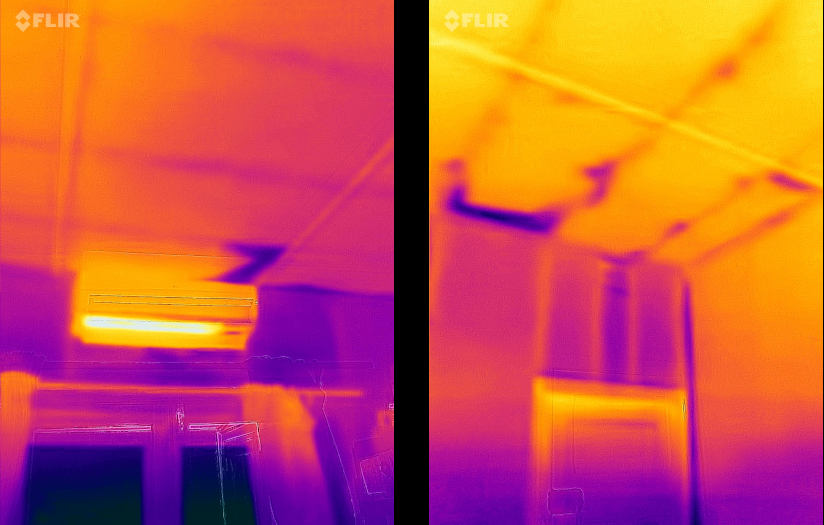
On the left, you can see my air conditioner. The dark spot above it is thanks to the installers not bothering to refit my insulation properly. More poorly fitted insulation batts on the right leave cold, dark gaps in the coverage.For an utterly random snapshot, you might find a few figures interesting. At my place, it’s 9ºC outside and 11 in the hall. Thankfully, I’ve built it up to about 25ºC inside in preparation for heading to bed. It’ll likely be 16 degrees by tomorrow, leading me neatly to back to my first point: Australians build crap houses.
A Few Changes Can Make All the Difference
The good news is, with some guidance, we can all make a much bigger dent in our bills and really improve home comfort with simple energy-efficiency measures. It can be as simple as sticking some bubble wrap on the windows or getting a door snake to counter some of the issues caused by poorly built housing.
It seems that a lot of Aussies agree with this:
Darren Wisemann
In SA…Cold nights, but don’t need any heating with day heating (all windows face north), & deciduous trees out front have dropped all leaves. Jumper did the job.James Coast
Pretty happy with our new insulation – 2ºC outside overnight and temp only dropped to ~18ºC without heating.Barry Walls
We live on the Monaro Plains, near the Snowy Mountains. The BOM reports…it is currently -7.4°C…We haven’t had our hydronic heating on since last Sunday, and we only put it on for two hours then…Currently it is about 20°C throughout the house, and I predict it will be about 16°C when we wake up in the morning. We won’t need the heater then either, because the big heater in the sky is scheduled to kick in at about 7:20am.The real moral of the story is Australians need to build better houses.
Stan Michaels
The moral is that we need better building standards. In western Europe with the passive houses you don’t need an energy source for heating. It is enough to cook a meal in the house once a day to stay at +20 inside. And it gets cold there, outside goes to -15 to -25 over night time. We are above 0 in Perth and inside is colder than outside. We are stuck in the last century with overpriced housing industry not managing even keep a structural integrity in some cases.
Of course, better homes and insulation are great, but they come with a higher initial price tag.
Fortunately…
Help May Be Coming
From mid-2024, the Nationwide House Energy Rating Scheme (NatHERS) will expand to include existing homes, with ratings available from mid 2025. It will be a tool that qualifies you for cheap finance for efficiency retrofits and also identifies how well a building performs when you’re buying.
Considering the value that a good solar energy system adds to your dwelling, in both energy terms and capital, it can make a significant difference. Imagine where we’d be if the home insulation scheme was still running and there hadn’t been a lost decade in energy policy…
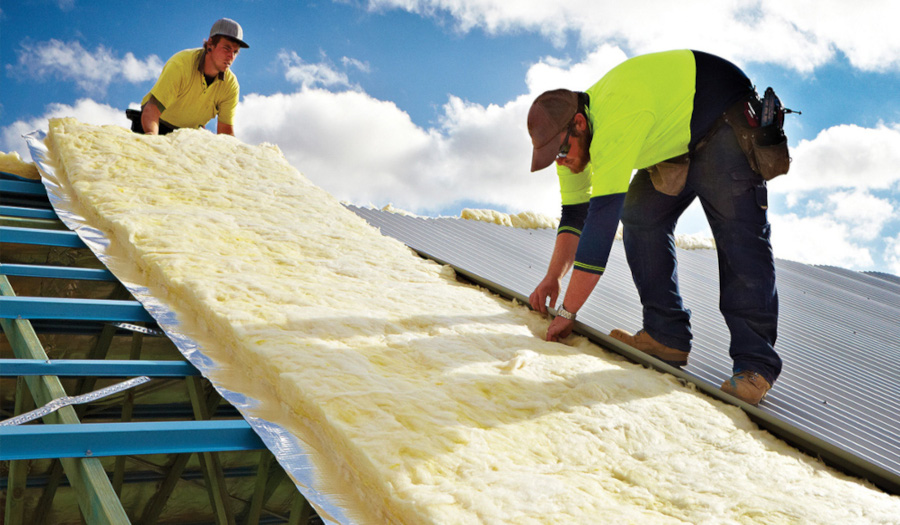
Anticon blanket installed under roofing iron is great insulation but sometimes harbours condensation.
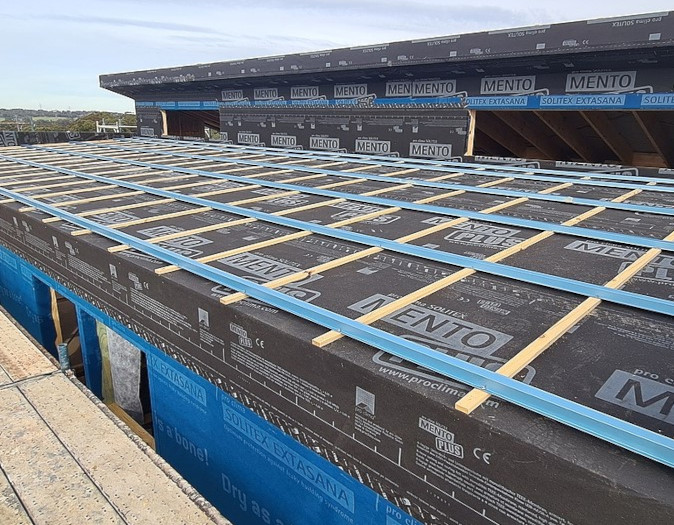
This is how you properly frame a roof with a permeable membrane and a hard air gap to offer a condensation path and insulation without a thermal bridge into the house.
Watch Out For Condensation
As we electrify everything and get rid of gas, we must consider how we manage moisture and what devices we use for heating and cooling.
Efficient houses that are well sealed may not be as cold, but they can harbour mould, especially if you’re bringing damp clothes inside to dry. Condensation can turn up in weird places and track into timber or plaster parts of your house that end up rotting.
Choose Your Air Conditioner Wisely
For heating in a cold climate, you must select an air conditioning unit for heating at the ambient temperature to get enough capacity. In short, the heating capacity reduces as the temperature outside reduces.
This has given heat pumps a bad reputation for heating, but in reality, it’s all about getting the technical details right. For example, a Daikin 5kW (cooling) unit will provide 6.1 kW of heat at 6ºC outside. So what happens when your place hits minus 10ºC? It’ll only manage 4.11kW heating, and you must consider defrost time.
An undersized unit will run its defrosting element more. When it’s really cold, an electric heater inside the home can help the heat pump start up quickly and run more smoothly.
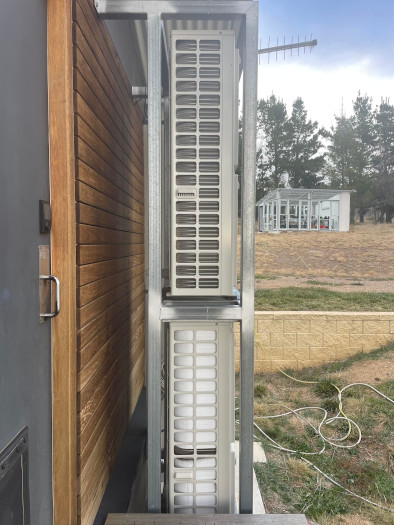
Pro tip: Mount your air conditioner a metre above ground level, and it will be far less likely to freeze (like the lower unit pictured here).
This is a problem we have to get right. If your A/C unit is rated to -5ºC but gets to -10ºC outside, everything is out the window regarding efficiency and expense. In extreme cases, you might find that a poorly chosen machine won’t work.
Scandinavians often use ground source heat pumps and typically supplement with a wood heater (and, of course, have much higher quality construction than Australian tents, er, houses). However, in the US, air-source heat pumps are more common and designed to run in freezing, snowy climates.
When buying an air conditioner for heating, ensure it will cope with the local weather. You don’t want an air conditioner salesperson telling you everything’s fine, only to find out the machine doesn’t work and you’re cold all winter.
Please don’t misunderstand me here – I’m not trying to give ammunition to those claiming ‘heat pumps don’t work in the cold’. The truth is: badly specified heat pumps won’t work in the cold. Well-specified, and thoughtfully installed ones will be fine in any temperatures found in Australia.
So How Can We Stay Cosy in Years to Come?
I may sound like a broken record, but many Australians live in thoughtlessly orientated, badly built, poorly designed, uninsulated, single-glazed, oversized, glorified grey tents. Pretty crazy in a rich country that regularly deals with extreme temperatures.
To combat these failures, we use vast amounts of energy to make our homes liveable. Now that energy prices continue to climb, our lax standards are coming back to bite us, and it disproportionately affects the old, the marginalised, and the renters, proving again that it’s expensive to be poor.
Fashion is partly to blame, with many buyers happy to spend tens of thousands on trendy aesthetic touches1, but loath to spend the same on better insulation or glazing. I think what we need to do (besides getting more solar) is demand stronger regulation and enforcement. How many six-star project homes are truthfully six-star energy efficient?
In the meantime, making a few changes, like insulating your leaky doors, can help make these cold winter nights a little more comfortable and keep the bills down.
Ultimate Solution = Solar + Thermal Envelope
For most Australians, the winter heating load comes with a substantially lower solar energy yield. There are two ways to get more solar electricity in winter:
- Tilt your panels towards vertical to catch more of the lower winter sun
- Add more panels
The latter is by far the easiest option for rooftop solar. Having enough solar power to run your heating on a winter day is a great feeling – and it’s a good reason to fill your roof with solar panels.
To check how much energy you’ll get in summer compared to winter, our Solar Calculator can help:
This is for a 6kW solar system in Adelaide split east-west:
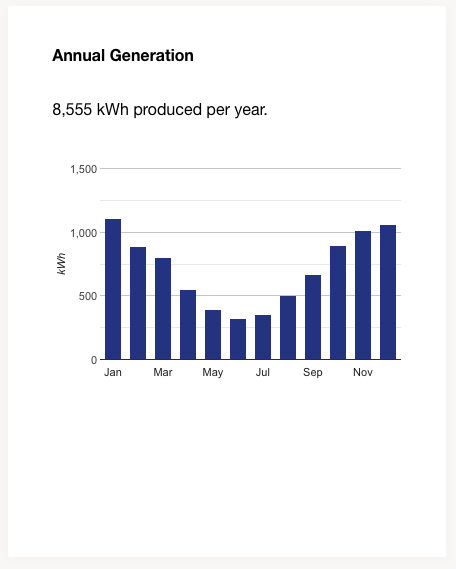
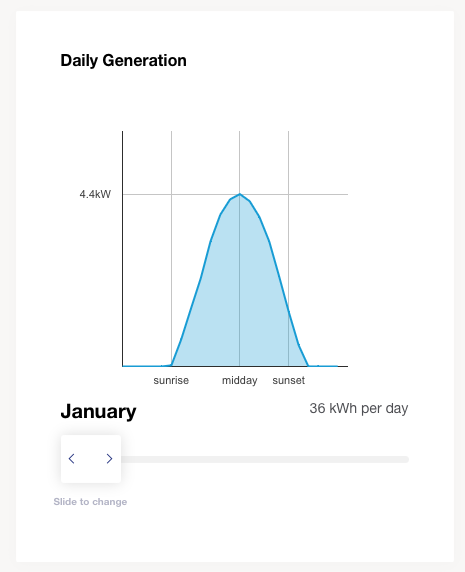
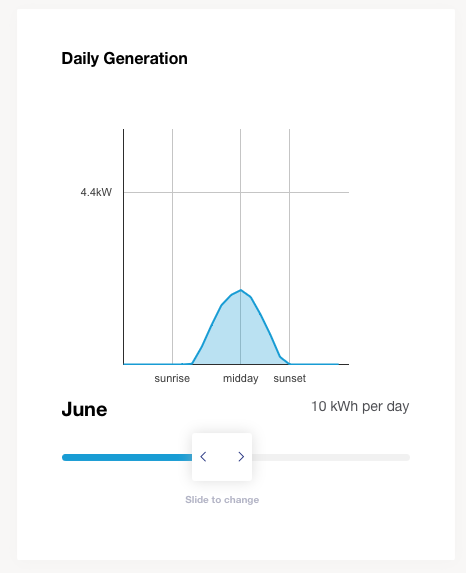
If you want to average 20 kWh per day in June from this roof, you’ll need twice the panels.
Combine big solar with a good thermal envelope, and you can heat your home with the sun in the day, and ride through the cold evenings thanks to the thermal mass.
A passive solar design can achieve this without the solar panels – the sun streaming through north-facing windows and heating your thermal mass. But that’s a big job for renovators.
If you are building, you can think about passive solar design. But also please put aside money, brainpower, and time with the builder to ensure your insulation is maxed out and properly installed, your windows are high-performance, and your gaps are sealed2. It won’t just save you tens of thousands on energy bills; it will make your home a happy, comfortable place, even in midwinter.
Footnotes
Original Source: https://www.solarquotes.com.au/blog/damn-its-cold/

